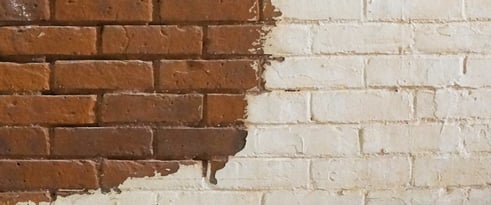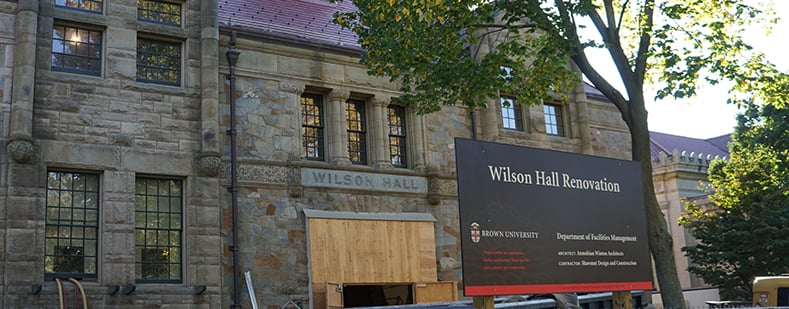Wilson Hall (recently renamed Friedman Hall) is one of the most heavily used buildings on the Brown University campus. The Romanesque-style (circa 1891) structure was built at the bequest of George Francis Wilson and was designed by architects Gould and Angell to expand Brown’s lecture and classroom space.
Prior to its recent renovation, this impressive structure had not seen significant improvements since the 1960s. Because Wilson Hall was built prior to modern federal standards for accessibility, renovating the building was a top priority for Brown. In addition, the university wanted to update and reconfigure its teaching spaces.
The renovation led to the addition of seven new classrooms, a common area, and two entryways with pathways to the College Green and Simmons Quadrangle. Overall, the building now has 20,000 ft² (1,860m²) of usable space.
Lead Paint Removal from Brick
As a major part of the renovation, all lead paint needed to be removed and remediated from approximately 14,000ft² (1,300m²) of brick within the building. This is where Sponge-Jet Sponge Media™ comes into play. The brick walls needed to be blast cleaned in a safe, low dust manner. Although the building was to be shuttered during the interior renovation process, the central location of Wilson Hall meant students, faculty and staff would be walking 15-30 feet from blasting cleaning process. Blast cleaning with Sponge Media was an excellent option for keeping the dust to a minimum and keeping blasters, workers from other trades, students, faculty and staff safe during the lead remediation process.

Another reason why Sponge-Jet’s Silver 60 Sponge Media™ was chosen as the surface preparation method was the desire to keep the brick fascia from being damaged during the lead paint removal process. A test sample was conducted prior to the beginning of the job, and Sponge Media caused no appreciable damage to the brick substrate.
As with any lead abatement project, OSHA and EPA requirements for containment and removal were followed. Blast cleaning with Sponge Media creates less of a waste stream, as the media can be recycled and reused. This was a huge cost benefit for the university since the disposal of paint and abrasive media containing lead is extremely expensive.
Properly disposing of hazardous waste is especially important for universities (and the protection of their endowment) due to cradle to grave liability. It is common practice for contractors to blast with single use abrasives and “dilute” the hazardous waste to meet disposal limits of non-hazardous, non-bonded disposal sites.
This questionable but common practice leaves future liabilities on the table if lead is discovered to leach from those disposal sites. The university and its endowments (along with all depositors of lead containing waste) could be called on to clean them up with nearly unlimited liability. By utilizing the Sponge-Jet process to minimize and concentrate the hazard, it can then be cost effectively disposed of in a proper, regulated, and bonded waste site, virtually eliminating future liability.
Sponge Media created a clean, uniform brick surface on the interior walls of Wilson Hall, all the while keeping dust to a minimum and creating a much lower waste stream than other methods. The low dust process kept blasters and all those on the campus safe during the lead removal and abatement and kept to the project’s timeline.









